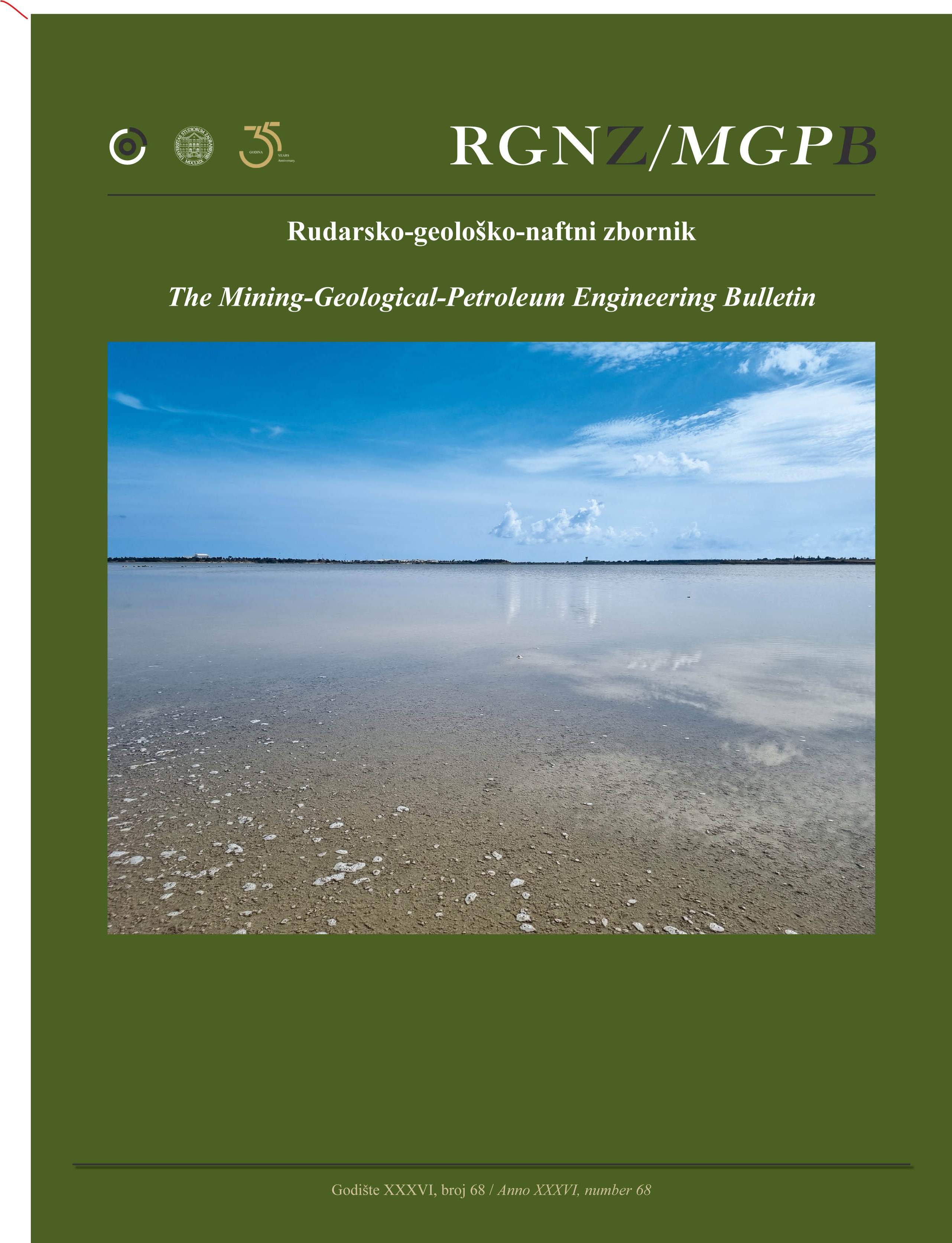Effects of porosity on the strength and mechanical behaviour of porous geo-materials under cyclic loading
Mechanics of Porous Geo-Materials
DOI:
https://doi.org/10.17794/rgn.2024.2.2Keywords:
fatigue life, porous geo-materials, fracture toughness, mechanical behaviourAbstract
Most rocks in nature are porous and usually saturated with different fluids such as water, oil, and gas. The conventional and unconventional hydrocarbon reservoirs are mainly associated with sedimentary formations. The main rocks of these reservoirs are sandstone (porous rock), limestone and oil shale (tight rock), which are associated with varying porosity. Hence, porosity serves as a fundamental parameter for most reservoir rocks. In this research, the effect of porosity on the mechanical behaviour of geo-materials and its fatigue behaviour was investigated. For this purpose, a total of five geo-material sample groups with varying porosities were prepared and designated, i.e. groups A, B, C, D, and E. Group A exhibited the highest porosity 20-21.5%, while group E had the lowest porosity 2-3%, respectively. The conventional quasi-static strength tests and cycle loading tests with constant frequency and amplitude were performed on the samples and different results were obtained. The samples belonging to group E, with the lowest porosity (2-3%), exhibited the highest mechanical strength, elastic modulus and fracture toughness values and the lowest Poisson's ratio compared to those of higher porosity samples. During the cyclic loading period, the fatigue stress-life graph of the E group has the lowest slope compared to the other groups. It means that the slope of the graph increases as the porosity increases in all groups. Therefore, the E group has the lowest porosity and the longest fatigue life time, i.e. porosity and fatigue resistance have an inverse correlation.
Downloads
Published
How to Cite
Issue
Section
License
Copyright (c) 2024 Abolfazl Dalirnasab, Mohammad Fatehi Marji, Hamid Reza Nejati, Mohsen Mohebi

This work is licensed under a Creative Commons Attribution 4.0 International License.
Creative Commons-BY
Authors who publish with this journal agree to the following terms:
In agreeing this form, you certify that:
- You read the ethical codex of the RGN zbornik available at journal web.
- You submitted work is your original work, and has not previously been published and does not include any form of plagiarism.
- You own copyright in the submitted work, and are therefore permitted to assign the licence to publish to RGN zbornik.
- Your submitted work contains no violation of any existing copyright or other third party right or any material of an obscene, libellous or otherwise unlawful nature.
- You have obtained permission for and acknowledged the source of any illustrations, diagrams or other material included in the work of which you are not the copyright owner.
- You have taken due care to ensure the accuracy of the work, and that, to the best of your knowledge, there are no false statements made within it.
- All co-authors of this submitted work are aware of, and in agreement with, the terms of this licence and that the submitted manuscript has been approved by these authors.
Publication licence
You retain copyright in your submitted work, according to journal license policy (CC-BY). By signing this form you agree that RGN zbornik may publish it under the publication licence. In summary the licence allows the following:
Anyone is free:
- To copy, distribute, display, and perform the work.
- To make derivative works.
Under the following conditions:
- The original author must always be given credit.
- The work may not be used for commercial purposes.
- If the work is altered, transformed, or built upon, the resulting work may only be distributed under a licence identical to this one.
Exceptions to the licence
In addition to publishing the work printed under the above licence, RGN zbornik will also enable the work to be visible online.
The journal editorial can change the licence rules anytime but it cannot retroactively restrict author(s) rights.


